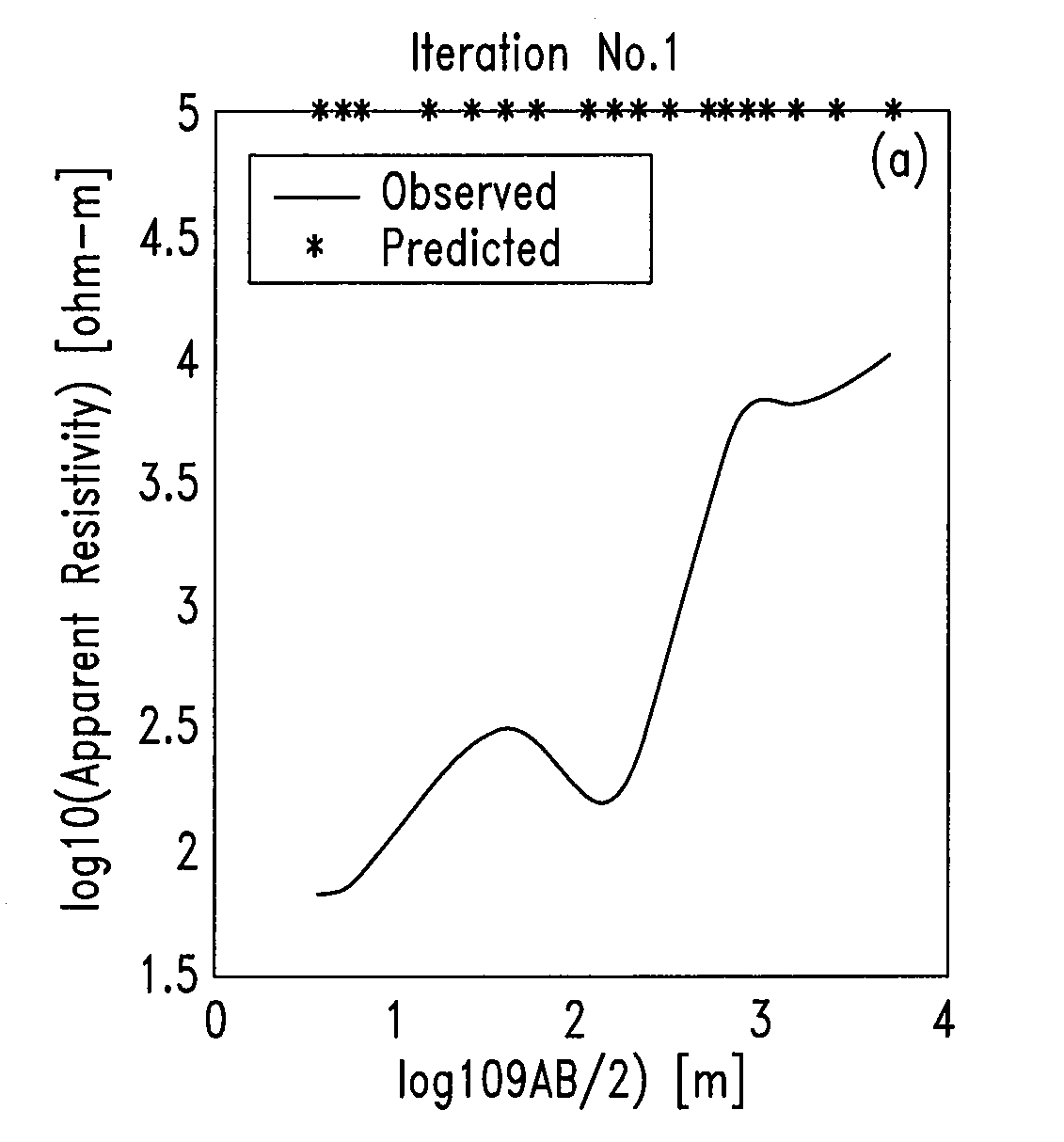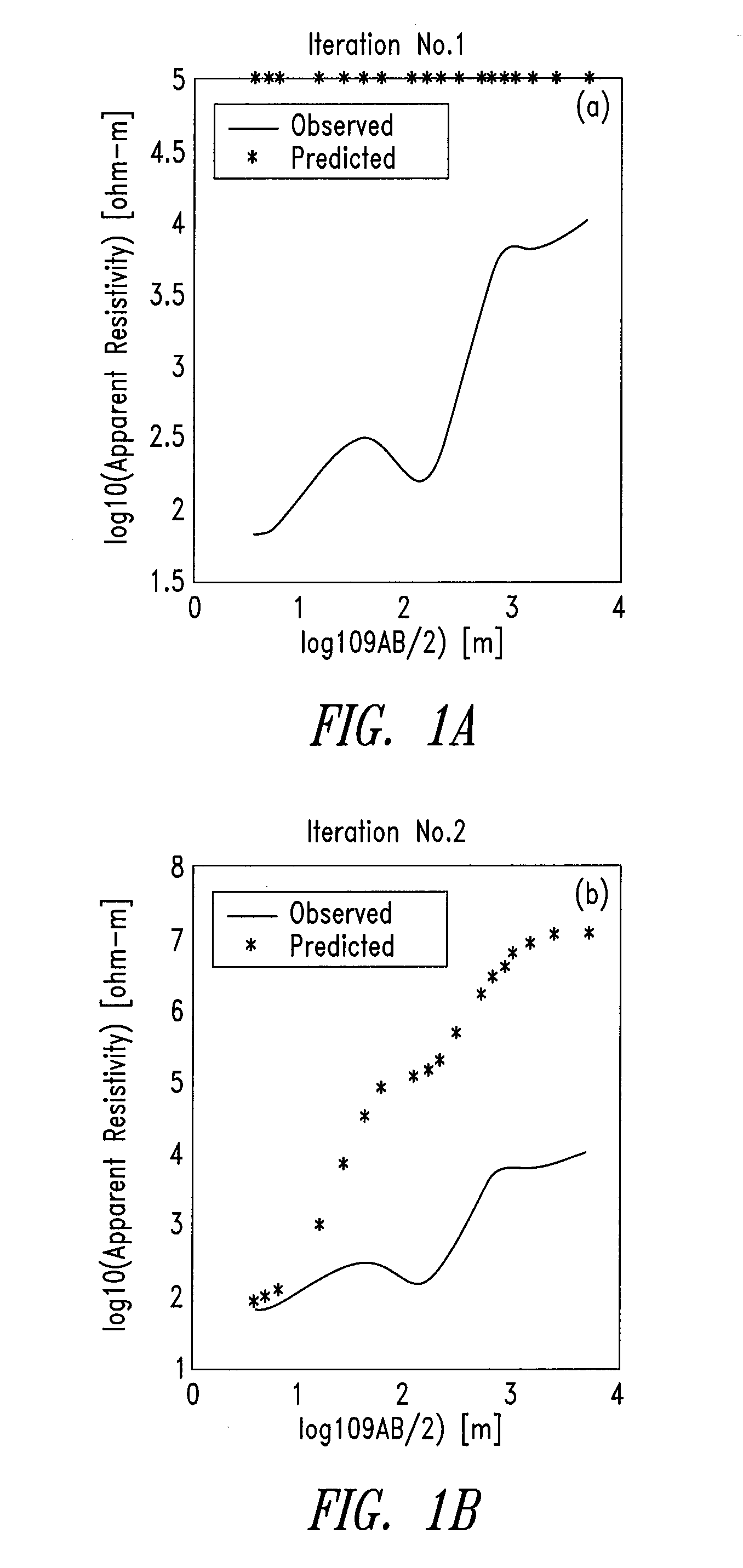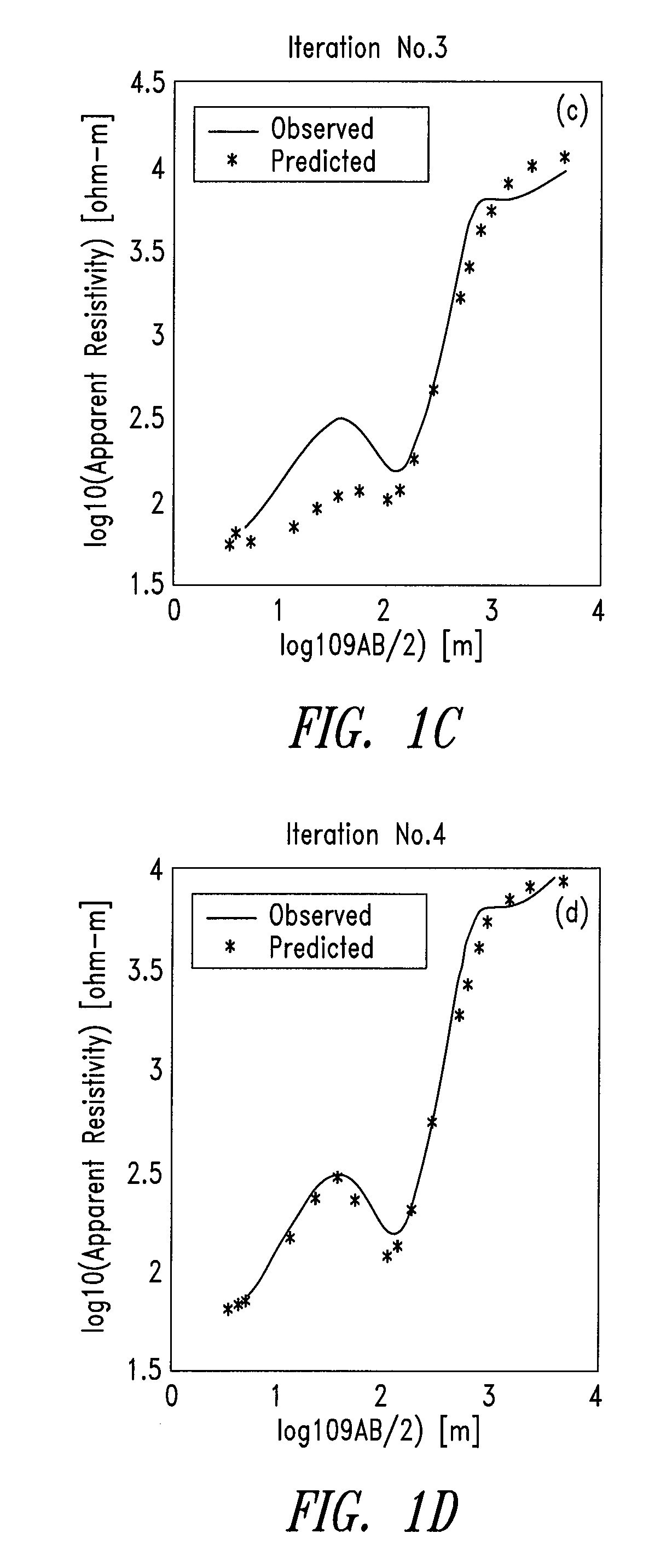Non-linear inversion technique for interpretation of geophysical data using analytically computed first and second order derivatives
a non-linear inversion and geophysical data technology, applied in the direction of seismology for waterlogging, using reradiation, instruments, etc., can solve problems such as 1 cases that do not match up
- Summary
- Abstract
- Description
- Claims
- Application Information
AI Technical Summary
Benefits of technology
Problems solved by technology
Method used
Image
Examples
example-1
[0054] Efficacy of the said embodiment in achieving good inverted model is shown here using synthetic model where the thickness of the layers is kept constant (=3.5 m) in order to have a smooth model. A forward response is computed using the synthetic model and that is inverted to get back the synthetic model. In the following table synthetic and inverted models are shown which shows that the error between the synthetic model and the model obtained after inversion using the said embodiment is very less.
Synthetic Model Log10Inverted Model Log10Resistivity (ohm-m)Resistivity (ohm-m)0.900.931.191.251.781.632.051.972.322.292.582.57
example-2
[0055] This example demonstrates the comparative convergence of the said embodiment with the existing Occam's inversion. RMS misfit that measures the difference between the observed and computed response has been shown for different values of μ for same number of iterations. It is clear from this example that the RMS misfit for μ<1 is less in case of the said invention. The used synthetic model has been shown in example 1 for computation of following results.
RMS MisfitRMS Misfit(Occam's Inversionμ(Using embodiment)Technique)No. of Iterations1.50.07410.055351.00.05291.057650.750.04161.260950.50.02971.818650.250.01701.24056
example-3
[0056] The said embodiment is used to interpret 1-D DC resistivity sounding data. The data from a geologically complex area of south India, Southern Granulite Terrain commonly known as SGT over a 10 km long profile located at 11°34′54″ N, 78°3′18″ E is used. The area represents a field example to demonstrate a wider applicability of the technique for any geological formation favorable for hydrocarbon, mineral deposit, groundwater geothermal reservoir etc. The convergence of the embodiment has been shown in FIG. 1(a-f) for different values of μ. The assumed starting model is a half space of 105 ohm-m, which is far from the observed one. The method searches for the lowest misfit until it becomes constant with further iterations as shown in FIG. 2.
[0057] It is clear from above examples that the said embodiment is very efficient, robust and simple to be used for the inversion of geophysical data. The method obviates the need to linearize a nonlinear problem to simplify the problem and ...
PUM
 Login to View More
Login to View More Abstract
Description
Claims
Application Information
 Login to View More
Login to View More - R&D
- Intellectual Property
- Life Sciences
- Materials
- Tech Scout
- Unparalleled Data Quality
- Higher Quality Content
- 60% Fewer Hallucinations
Browse by: Latest US Patents, China's latest patents, Technical Efficacy Thesaurus, Application Domain, Technology Topic, Popular Technical Reports.
© 2025 PatSnap. All rights reserved.Legal|Privacy policy|Modern Slavery Act Transparency Statement|Sitemap|About US| Contact US: help@patsnap.com



